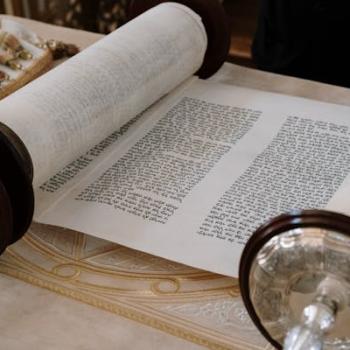
We are blessed to have our guest blogger Jospeh Parks join us this week and share his dating of the exodus from Egypt.
Ancient Egypt and the Bible
Article 5 – The Dating of the Exodus
Joseph DeWayne Parks RN, BSN
October 1, 2023
Latest Possible Dating of The Exodus
As previously mentioned in the last article on the historicity of Moses, no one truly knows when the Exodus occurred. There are no written accounts by the ancient Egyptians that record the Exodus as an event in their history and there is also no direct archeological evidence to suggest that a population of enslaved Semitic people left Egypt in mass and traveled through the Sinai and Negev to reach a new home in Canaan.
Belief In The Exodus
However, there is still a small number of Egyptologists, biblical archaeologists, and biblical scholars who believe that the Israelites lived as slaves in ancient Egypt and were eventually led by a single leader to a new home in the hill country of Canaan. In this article, I will examine the most popular of the Exodus dating theories amongst historians and archeologists and give my own opinion on whether the evidence they provide makes the most logical sense.
Merneptah Stela Dating of The Exodus
Before we can do anything else, we must first establish a rough cut-off date that we can use as a guidepost to indicate the Exodus had to have occurred prior to this date if it was a real historical event. Luckily, we have a rough cut-off date for the timeframe of the Exodus, and it comes from the Merneptah Stela.
Discovery
The Merneptah Stela is a granite stela that was discovered by Flinders Petrie (June 3, 1853 – July 28, 1942) in 1896, measures almost 7 1/2 ft. high and 3 1/4 ft. wide and came from the funeral chapel of Pharaoh Merneptah (1224-1214 B.C.) in the Valley of the Kings (Tomb KV8) at Luxor, Egypt. The stela was originally inscribed by Pharaoh Amenhotep III (1391-1353 B.C.) but was recycled by Pharaoh Merneptah to celebrate his militaristic victory over Libya and various peoples in Syria-Palestine in 1208 B.C. The stela now rests in the Egyptian Museum in Cairo.
Importance
The Merneptah Stela contains the only known reference to Israel in ancient Egypt. “Israel” is referred to in the hieroglyphs as a “people” rather than a “nation” based on the determinative hieroglyphs used at the end of the name. This would indicate that the Israelites were living as a tribal confederation at this time as depicted in the Book of Joshua and the Book of Judges. If the events of the Book of Exodus are historically accurate, that means that the Exodus had to have occurred before 1208 B.C. per the Merneptah Stela. So, we have 1208 B.C. as our cut-off date but can we get closer to an actual date of the Exodus?
Two Theroies For Dating The Exodus
Mainstream historians, Egyptologists, and biblical scholars typically accept one of two theories on the dating of the Exodus. These two theories are the 15th-century B.C. dating theory (also known as the Early Exodus Theory) and the 13th-century B.C. dating theory (also known as the Late Exodus Theory). For those who accept the 15th century B.C. dating theory, the Exodus would have occurred in ca. 1446 B.C. and during the reign of Pharaoh Amenhotep II (r. ca. 1450-1412 B.C.). For those who accept the 13th century B.C. dating theory, the Exodus would have occurred in ca. 1230 B.C. and during the reign of Pharaoh Ramesses II (1279-1213 B.C.).
Early Dating of The Exodus
What evidence is there to support the Early Exodus Theory? The cornerstone of this theory is the following passage found in 1 Kings 6:1 – “In the four hundred eightieth year after the Israelites came out of the land of Egypt, in the fourth year of Solomon’s reign over Israel, in the month of Zev, which is the second month, he began to build the house of the Lord”.
Reigns Of The Pharohs
In this passage, the author(s) of the Book of Kings states that the Exodus occurred 480 years before the construction of the First Jewish Temple during the fourth year of King Solomon’s reign. The reign of Thutmose III dates to 1479-1425 B.C. and his son, Amenhotep II, took the throne in 1427 B.C. However, many proponents of this Early Exodus Theory argue that there are some problems with the dating of the reigns of the pharaohs of the 18th Dynasty and suggest that the dates should be rearranged based on the examination of an astrological text called the Eber’s Papyrus.
Eber’s Papyrus Dating The Exodus
The Eber’s Papyrus records an astrological event involving a star called Sothis that occurred during the reign of Pharaoh Amenhotep I. Astronomers who study the patterns of the heavenly bodies in ancient times date this event to ca. 1541 B.C. Using the data provided by Eber’s Papyrus, the reigns of Thutmose III and Amenhotep II can be reassigned to ca. 1506-1452 B.C. and ca. 1455-1418 B.C. respectively. It should be noted that that only proponents of the Early Exodus Theory like Dr. Scott Stripling and Dr. Bryant Wood say that the timeline of the 18th Dynasty needs to be adjusted so the adjustment of dates based on the Eber’s Papyrus should be taken with a grain of salt.
Amenhotep II
While there is no direct evidence that states Amenhotep II was the second pharaoh of the Book of Exodus, there are some historical records that make correlations between the Exodus and the reign of Amenhotep II. Amenhotep II’s family dynamics suspiciously fit the demands needed for the second pharaoh of the Book of Exodus. Amenhotep II inherited the Egyptian throne after the death of his father, Thutmose III, but did co-rule Egypt with his father for two years. This would correlate with the passage in Exodus 2:23 that claims the original pharaoh died and was replaced by a new pharaoh while Moses was in Midian.
Prince Amenemhet
Amenhotep II was not the eldest son of Thutmose III; that was Prince Amenemhet. Amenhotep II’s son and successor, Thutmose IV, was also not the pharaoh’s eldest son; that was Prince Amenhotep. Prince Amenhotep would have been the successor to the Egyptian throne but he mysteriously disappeared from the historical record. The Egyptian throne then went to Thutmose IV, a royal prince who, according to his account on the Dream Stela, was not the original heir to the throne. The fact that Amenhotep II was not a firstborn son could indicate that he would have survived the 10th plague and that Prince Amenhotep may have been the crown prince who died during the 10th plague. This correlates with the biblical narrative’s claim that the crown prince died but the pharaoh survived.
Military Evidence
The militaristic campaigns of Amenhotep II also have a connection to the date of the 15th century B.C. date of the Exodus. While Amenhotep II’s militaristic campaigns into the Levant were primarily motivated to ensure Egyptian dominance in the region and crush rebellions, these campaigns also benefited Egypt with a large supply of captives and treasure. According to the Karnak Stela, the pharaoh gained a massive amount of wealth from northern Palestine and Syria during the second year [ca. 1448 B.C.] of his reign. This wealth included 6,800 deben [6,143 lbs.] of gold and 500,000 deben [120,833 lbs.] of copper. While the treasure was a nice bonus, the main reason for Amenhotep II’s first military campaign was to capture seven Asiatic princes who rebelled against Egyptian rule.
Besides material wealth, Amenhotep II also took from the Levant many captives that would have been used to fuel the Egyptian economy through slavery.
The Memphis Stela Dating The Exodus
The Memphis Stela, which records a military campaign into Palestine that occurred during ca. November 16, 1446 B.C., states that Amenhotep II returned to the Levant in what seems to have not been politically motivated. According to Egyptologist Dr. Doug Petrovich, Amenhotep II’s second military campaign occurred to capture peoples from the Levant and to feed the Egyptian demand for slaves. Dr. Petrovich also states that it would have been odd for the pharaoh to host a military campaign during a time in which the harsh weather made most ancient monarchs stop waging war and focus on domestic affairs. The Memphis Stela states that Amenhotep II captured a total of 89,600 captives during this campaign. These people included 3,600 ‘Apiru, 15,200 Bedouins, and 36,300 Hurrites. Because the second military campaign occurred around the year that 1 Kings 6:1 dated the Exodus [1447-1446 B.C.], Dr. Petrovich argues that Amenhotep II may have waged his second military campaign so that Egypt could rebuild the gap in slave labor.
Problems With An Early Dating of The Exodus
What makes the Early Exodus Theory likely not to be correct? There are many holes in the Early Exodus Theory along with some exaggeration of the findings that support it. To even make Amenhotep II the pharaoh confronted by Moses, the timeline for the 18th Dynasty has to be completely changed and this goes against the most commonly accepted way of dating ancient Egyptian history by every mainstream Egyptologist.
Exaggeration
The fact that Amenhotep II led military campaigns into the Levant to capture slaves and treasure is something that many pharaohs did to display Egyptian hegemony over their Canaanite vassals. The use of the passage from 1 Kings 6:1 to justify the dating of the Exodus to 1446 B.C. has also come into question since the Egyptologist Dr. David Falk reports that the passage being read from the Book of Kings is a temple dedication inscription and it was a common practice in ancient Israelite culture and other ancient Middle Eastern civilization to give exaggerated importance to a person or place as seen in the extremely long lifespans found in the early chapters of the Book of Genesis or the amount of time the Israelites spend out in the wilderness of the Sinai and Negev.
Established Dating
Finally, the Early Exodus Theory would also conflict with the established dating of many other events in biblical history such as the Israelite Conquest of Canaan under Joshua and the reigns of the judges mentioned in the Book of Judges – most of which suggest a later date for the Exodus if the Bible is historically accurate.
A Late Dating
What evidence is there to support the Late Exodus Theory? According to the Book of Exodus, the Hebrew slaves are forced by the Egyptians to construct – not the Pyramids at Giza as depicted in Hollywood films – but the cities of Pithom and Ramses. These cities do exist in the archaeological record and the second city is better known as Pi-Ramesses. Pithom comes from the Egyptian name “pr-jtm”, which means “the house of Atum” and called that due to being the home of a temple dedicated to the Atum – the Egyptian god associated with creation by the priests at Heliopolis and the god of the Sun at dusk. P-Ramesses comes from the Egyptian name “pr-r’-ms-sw”, which means “the house of Ramesses” and was called that due to being the capital city of Egyptian during the reign of Pharaoh Ramesses II.
Biblicl Evidence
So, we have the Bible itself saying that the enslaved Israelites were forced to build two cities that were built during the reign of Pharaoh Ramesses II, with one of them bearing his name! Other locations mentioned in to exist in Egypt and the Sinai by the Book of Exodus during the mass migration of newly freed Israelites also appear in documents dating to the 19th Dynasty such as Succoth, Migdol, and Baal-zephon.
Historical Evidence
While there is no direct evidence that states Ramesses II was the second pharaoh of the Book of Exodus, there are some historical records that make correlations between the Exodus and the reign of Ramesses II. Ramesses II was famous for his massive construction projects throughout the Egyptian Empire which include his capital city of Pi-Ramesses in the Nile Delta, his monumental tomb in the Valley of the Kings, the monumental tomb of his wife Queen Nefertari, and various temples such as the Ramesseum, the Temple of Ramesses II at Abu Simbel, and additions he made to the Karnak Temple and the Abydos Temple.
Social Reasoning For a Late Dating of Exodus
While the construction of sacred places such as temples and tombs were placed in the well-trained hands of free Egyptian artisans and laborers who got paid for their hard work, the construction of other structures like city walls, canals, and the houses of commoners would have been done by slave labor and mud brick. Therefore, it wouldn’t be illogical to conclude that Pharaoh Ramesses II would have required a massive slave force to be able to build the monuments that would stand the test of time.
Military Evidence
Other than being famous for his construction projects, Pharaoh Ramesses II was also famous for defending Egypt from various enemies during his reign such as the Sea Peoples – a confederation of pirates of likely Aegean origin who raided Egypt; Turkey, and the Levant during the Late Bronze Age – and the Hittite Empire – an empire of Indo-European origin that ruled over most of Turkey along with the northern parts of the Levant and Mesopotamia.
The World’s First Peace Treaty
Pharaoh Ramesses II formed the world’s first peace treaty with King Muwatalli II (c. r. 1295-1272 B.C.) of the Hittite Empire after fighting the Hittites at the Battle of Kadesh in May 1274 B.C.
Pharoh’s Motive
Despite peace being established between the Egyptians and the Hittites, Pharaoh Ramesses II still would have to be held responsible for ensuring Egypt would not fall to a foreign invasion. These parallel the concerns of the unnamed pharaoh of the Book of Exodus, who justified the enslavement of the Israelites and the infanticide of all Hebrew boys because he feared that if Egypt was to be attacked by its enemies, the Israelites might be tempted to join Egypt’s enemies and destroy the land they were originally allowed to live in freely.
Problems With A Late Dating
What makes the Late Exodus Theory likely not to be correct? The largest problem with the Late Exodus Theory is the lack of Egyptian records and physical archaeological evidence. However, because the enslavement of the Israelites and the actions that occur within the Book of Exodus appear to be limited to the area of the Nile Delta – any papyrus documentation that would have been left behind at the cities of Avaris, Pithom, and Pi-Ramesses would have been destroyed due to being in a moist environment, thus causing papyrus scrolls to decay over time.
Propaganda
Furthermore, Pharaoh Ramesses II – like many of the Egyptian pharaohs – was used to using propaganda and edited historical accounts to glory his reign and ignore failures and defeats. For example, Pharaoh Ramesses II’s account of the Battle of Kadesh indicates that the battle concluded with a complete Egyptian victory while the Hittite accounts indicate that the battle ended in a stalemate.So, if Pharaoh Ramesses II was alright with falsifying the results of the military campaigns to save face, it shouldn’t be considered odd if he would have not wanted a slave rebellion that occurred during his reign to be recorded.
Death Of The Firstborn
Another problem with the Late Exodus theory is that we have limited information on the death of Pharaoh Ramesses II’s firstborn son – Prince Amunherkhepeshet. While it is known that Prince Amunherkhepeshet died around c. 1254 B.C., his cause of death is unknown, and his death didn’t seem to place Pharaoh Ramesses II in an emotionally vulnerable place like the unnamed pharaoh in the Book of Exodus since Pharaoh Ramesses II had over 100 children that could easily become the new crown prince. In fact, following the death of Pharaoh Ramesses II around the age of 90, he had outlived most of his wives and children and the next ruler of Egypt – Pharaoh Merneptah – was the 13th son of Pharaoh Ramesses II.
The Josephus Dating
There is also another theory regarding the date of the Exodus known as the 1525 B.C. dating theory. This theory connects the expulsion of the Hyksos – a Semitic people who ruled over the Nile Delta region of Egypt during the Second Intermediate Period – by Pharaoh Ahmose I to the Exodus of the Israelites. This theory was proposed by the Roman-Jewish historian Josephus (c. 37 – c. 100 A.D.) and Josephus interpreted the exile of the Hyksos with the Exodus due to both being a large number of people of Semitic origin being forced to flee Egypt.
Problems With Josephus’ Dating
However, this theory makes little to no logical sense as the Hyksos and the Israelites are two different groups of people. The Hyksos were once in charge of their pharaonic dynasty and forced out of Egypt once the native Egyptian pharaonic dynasty based in Thebes was strong enough to defeat them in battle. The Israelites, on the other hand, were a group of immigrants that may have been welcomed into the Nile Delta region by the Hyksos but became slaves to the native Egyptians many generations later.
Also, archaeologists have noted that after the Hyksos were exiled from Egypt by Pharoah Ahmose I, there still was a significant Semitic population living in the former Hyksos capital of Avaris in the eastern half of the Nile Delta. This Semitic population was Egyptianized, lived outside of part of Avaris that once held the Hyksos palace-complex, and still lived within Avaris and Pi-Ramesses until they mysteriously left during the reign of Pharaoh Ramesses II.
Conclusion
In conclusion, both the Early Date and the Late Date Theories on the dating of the Exodus have small amounts of evidence to support the suggested dates of the Exodus, but they both have problems when being tested alongside the Torah and the Egyptian historical records. In my personal opinion, I do think that the Exodus is based on a true historical event, but I think it most likely happened during the time of Egypt’s 19th Dynasty (the dynasty ruled Ramesses II and his descendants) due to the geographic names of location in Egypt and the Sinai having parallels to Egyptian documents dated to the 19th Dynasty and because the cities of Pithom and Pi-Ramesses play a significant role in the story.
Furthermore, we have archeological evidence that confirms that a significant population of Semitic peoples lived within the Nile Delta and left during 19th Dynasty. However, I would like to see more evidence (if possible to be found) because I can pin Pharaoh Ramesses II the antagonist of the Book of Exodus.

















